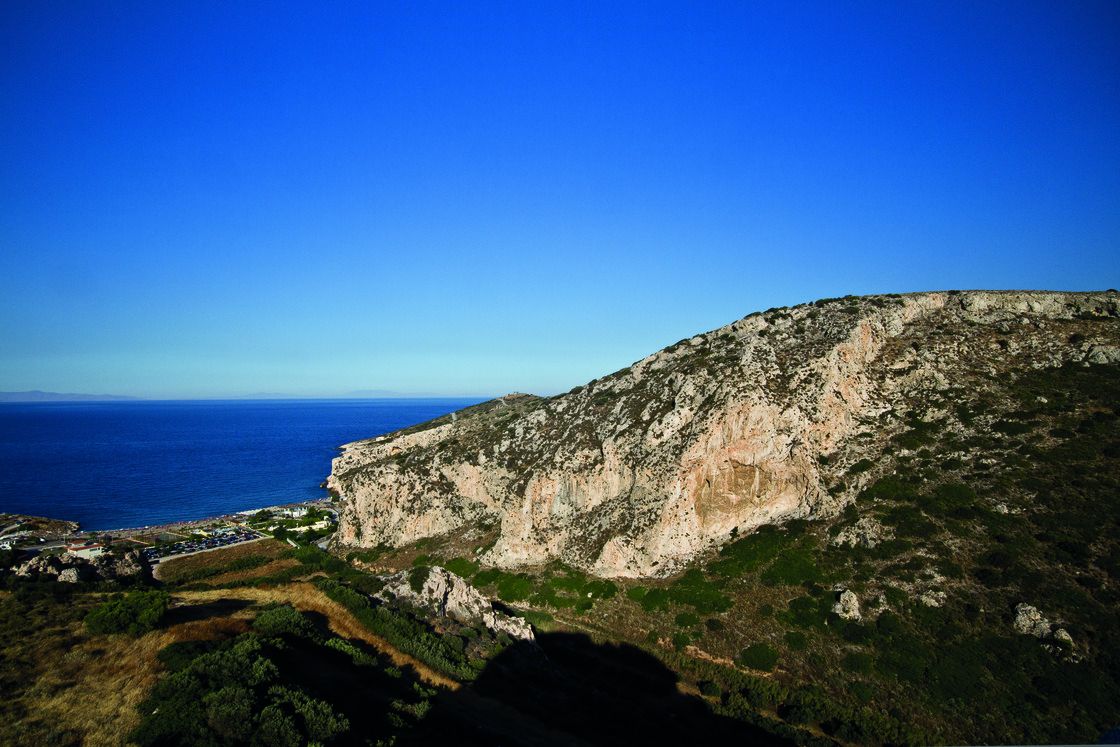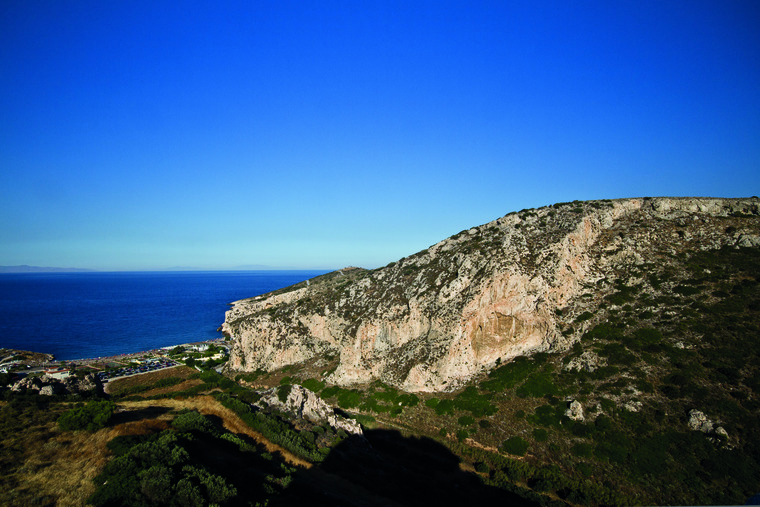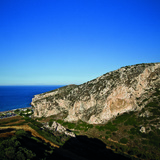Kakia Thalassa is one of the few Athenian crags in close proximity to the sea. Of the three sectors, “Shismi” is certainly the most interesting, though sector “Mikres” is also worth a look. Sector “Spilia” has some short lines of high difficulty but due to location and mostly due to lack of maintenance sees little activity and is not included in this guidebook.
Sector “Shismi” (literally ”crack”) is a real treasure numbering many top quality routes. The routes are mostly vertical, up to 30-35m in height, with constant difficulty and a relatively stiff -but fair- grading. The first bolt on some routes is placed a bit high. Apart from a few spots, the rock is solid (much better than it looks) and the feeling is less salty and slippery compared to nearby Daskaleio crag. During the major bolt maintenance that took place during 2012, all old expansion bolts were replaced with stainless steel chemical bolts. At the time of writing the bolts are in good condition.
The 2012 maintenance was carried out by D. Stravogennis with the assistance of T. Tsoumanis, T. Grassos, K. Kiriazidis, K. Politis and G. Kagiaftakis.
Sector “Mikres” can be found a bit lower on the footpath to “Shismi”. The lines here are short and not particularly inspiring to the eye but generally they surprise with their quality and movement repertoire.
During the summer months, Kakia Thalassa is a good place to combine morning
climbing and afternoon swimming.
A few trad multi-pitch routes also exist in the area. These are not included in this guide (information about these lines can be found on “Attica Rock” by D. Titopoulos).




